The War Rooms, St. James's Park by Ned Scott
This series of hand drawings by Bartlett School of Architecture graduate Ned Scott presents a science-fiction world in which London grows a jungle of crops for fuel and food next to Buckingham Palace.
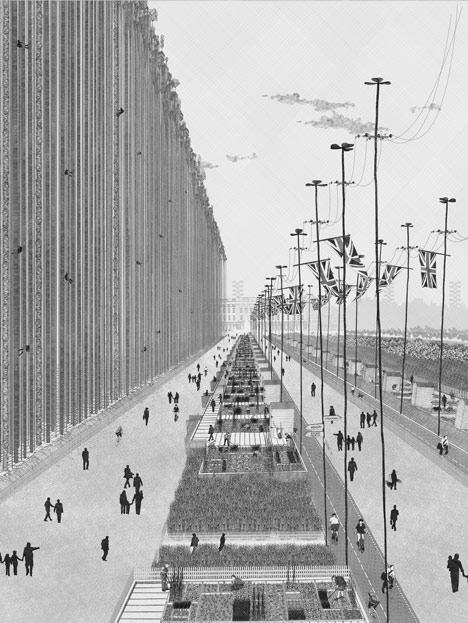
Above: The Mall
The War Rooms, St. James's Park imagines a future in which the UK's energy supply has been cut following a war over energy resources in 2050.
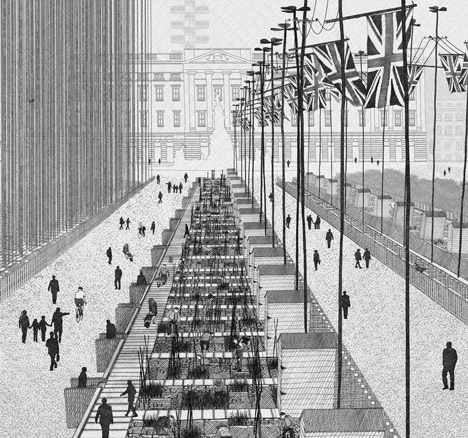
Above: The Mall - detail
Scott presents a closed-loop agricultural system where London provides energy and food for itself without relying on imports.
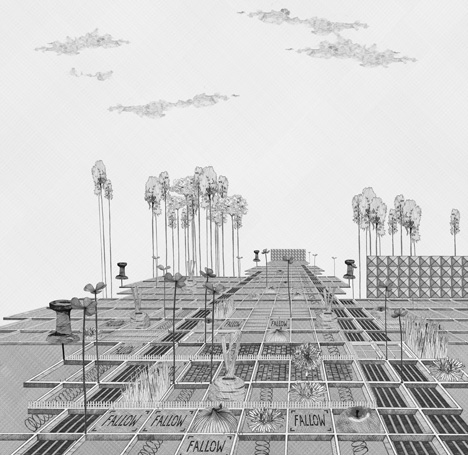
Above: Smart Grid
An anaerobic digester would stand on the outskirts of St. James's Park, filled with vertiginous crops.
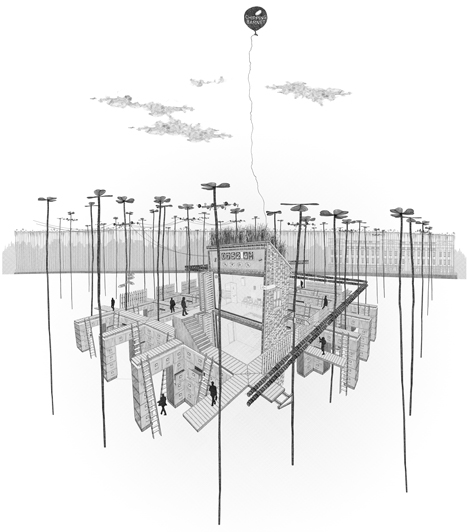
Above: MP's House
A sky-scraping 'energy tower' nearby would have plants growing on every floor, and a smart grid would be installed for efficient energy use.
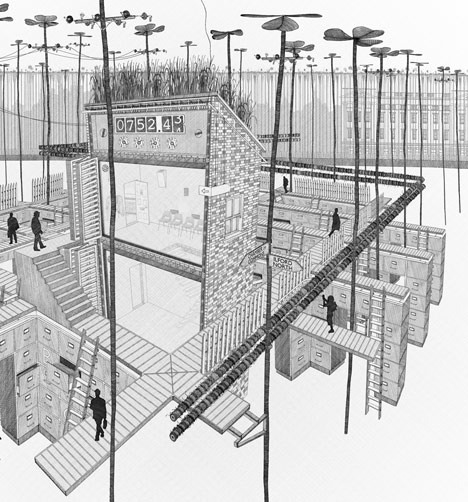
Above: MP's House - detail
Scott was inspired by Ebenezer Howard, the late 20th century thinker whose utopian writings led to the creation of several 'garden cities' in Britain.
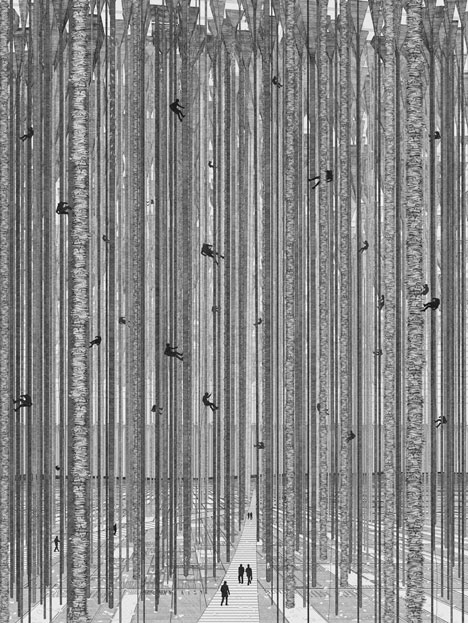
Above: New St. James's Park
See more work by Bartlett graduates »
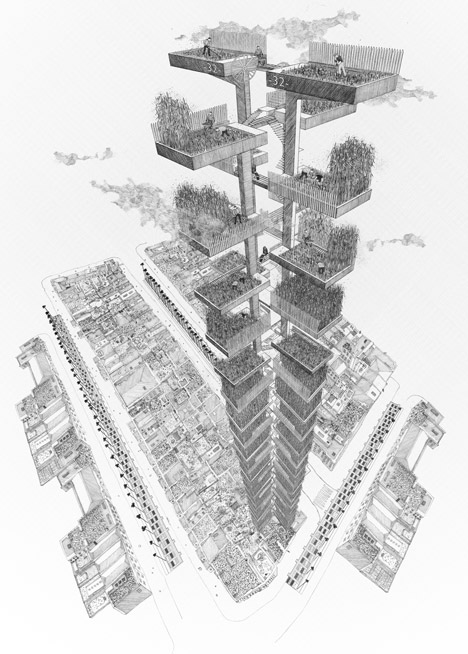
Above: Energy Tower
See all our stories about conceptual architecture »
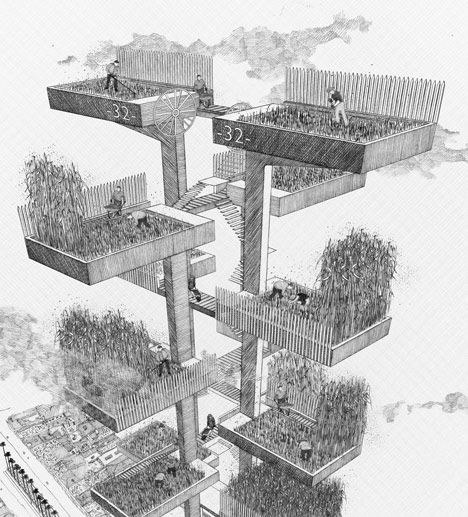
Above: Energy Tower - detail
See all our stories about graduate shows in 2012 »
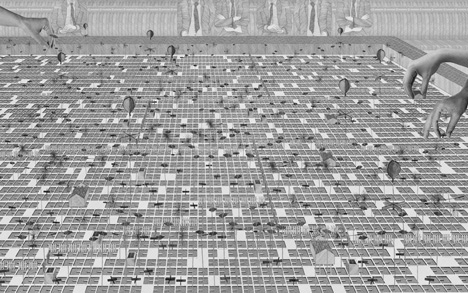
Above: The Instrument
Here's some more information from Ned Scott:
The War Rooms, St. James's Park
The War Rooms takes a science-fictional premise in which the UK’s energy supply networks are terminated following an Energy War in 2050.
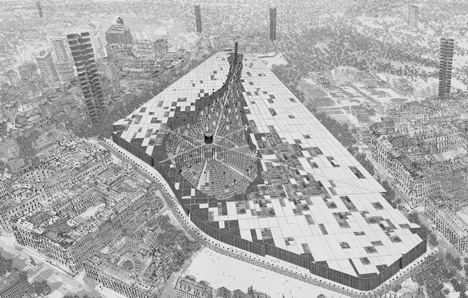
Above: Aerial Perspective
The project explores the implications of the decentralisation of the UK’s energy networks and the implementation of a closed-loop agrarian economy.
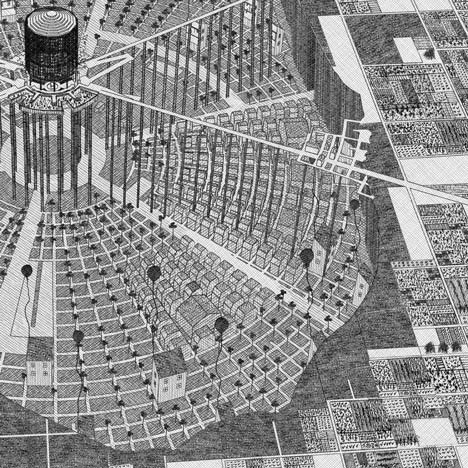
Above: Aerial Perspective - detail
The science-fictional scenario presented and the subsequent urban strategies proposed address the challenges the UK faces regarding energy security and fuel poverty, and speculates on the hypothetical consequences of a future where the many risks associated with the UK’s long-term energy strategy come to bear
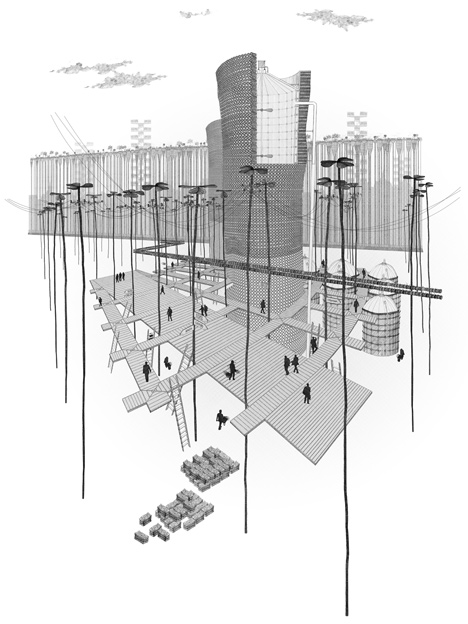
Above: Anaerobic Disaster
The War Rooms, St. James’s Park introduces an institutional framework for agrarian reform, inspired by Ebenezer Howard, which operates on three simultaneous scales representative of the three protagonists of Clifford D. Simak’s 'City': Man, Dog and Ant.
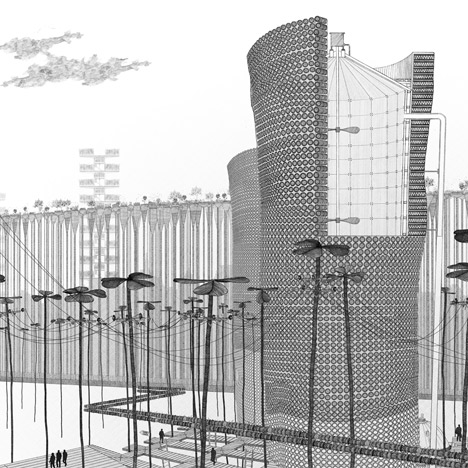
Above: Anaerobic Disaster - detail
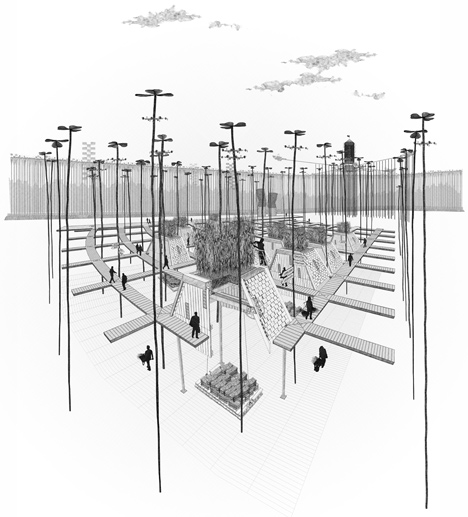
Above: Energy Warehouse

Above: Energy Warehouse - detail
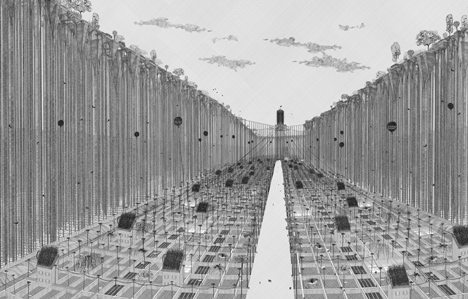
Above: Howard Boulevard
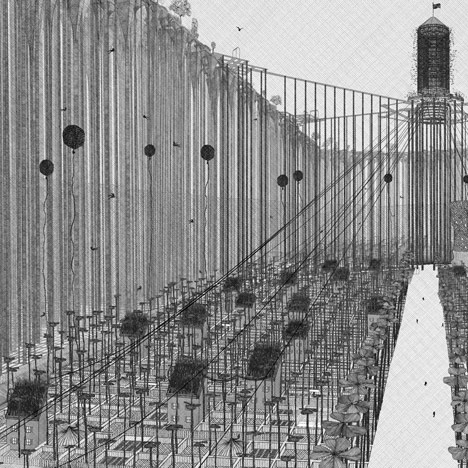
Above: Howard Boulevard - detail